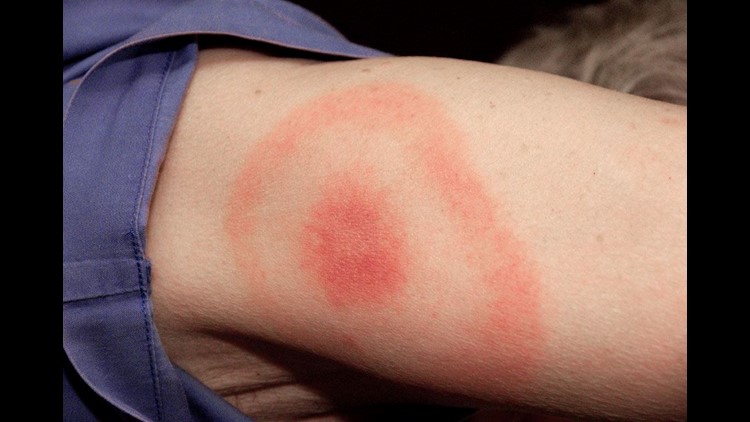

whether or not you do a full-body tick check to make sure you don’t have any attached to your body.what stage of its life cycle it’s in and.How long the tick stays attached depends on a few things: This is because the amount of time a tick is attached and feeding matters in relation to the possible illness or infection it might cause. If you find a tick attached to your body, it’s important to remove it as soon as possible. Ticks usually stay attached, continuously sucking blood, until they release or are forced to release. Ticks often bite people on their armpits, groin or hairline. On the other hand, ticks will travel to a warm, damp, out-of-sight spot to bite you. Most people get mosquito bites on their arms, legs, feet and ankles. While mosquitoes can bite through some clothes, they are more likely to go to an area that is exposed. Mosquitoes typically bite wherever they can get easy access to our blood. Although it is possible to get bites from two or more different ticks, if you’ve spent time in a heavily tick-infested area. They don’t travel in packs or bite someone more than once. Ticks, on the other hand, bite a person and hold on until they drop off or are pulled off. This is why most people get several mosquito bites, or a whole lot of them, not just one. Mosquitoes often fly together in groups, and a single mosquito might also bite the same person several times. Number of BitesĪnother difference between mosquito and tick bites is the number of bites you have. If you spend time outdoors and then have itchy bites, they’re more likely to be mosquito bites than tick bites.

This rash may cause itching after a few days, but usually, tick bites don’t itch the way mosquito bites do. A large rash may also develop surrounding the bite area that grows to several inches wide. If the bite came from a tick carrying Lyme disease, the bite may look like a bullseye, with a red center surrounded by a pale circle and a larger red circle. This lump may become swollen, itchy or turn into a blister. While some people may not experience any reactions to tick bites, others might have a small red lump on their skin. So, one easy sign that you have a tick bite is if you can see the tick itself attached to your skin. For one, ticks often stay attached to their host for several days at a time. Tick bites look very distinct from mosquito bites. Also, bites may be red all over or red around the edges but paler in the center of the welt. Some people have stronger allergic reactions to mosquito bites, so their welts might be large and swollen. A mosquito bite might itch a little for a short time, or it might itch a lot and for quite a while.
Tick bite bullseye skin#
Appearanceįor most people, mosquito bites show up as small, pinkish-red welts on the skin that may be circular or oval-shaped. Fortunately, there are ways to tell the two types of bites apart, so you can be informed. If you know which pest you’re dealing with, you’ll know what type of follow-up precautions to take, if any. This means that during mosquito season, it can feel as if there’s never a time when these bothersome pests aren’t out in droves. alone! Different types of mosquitoes are active at different times of day. There are well over 3,000 species of mosquito in the world, 176 of which can be found in the U.S. simply because these pests are so common. Most likely you’re dealing with a mosquito bite. Of course, mosquitoes have also been known to carry diseases that can make humans sick, such as the West Nile virus and the Zika virus.
Tick bite bullseye how to#
Could it be a bite from a mosquito or even a tick? Since ticks can cause serious illnesses like Lyme disease, it’s important to know how to tell tick bites from mosquito bites. Then, you find a red, itchy welt somewhere on your skin. It’s warm out and you’ve been spending time outdoors.


 0 kommentar(er)
0 kommentar(er)
